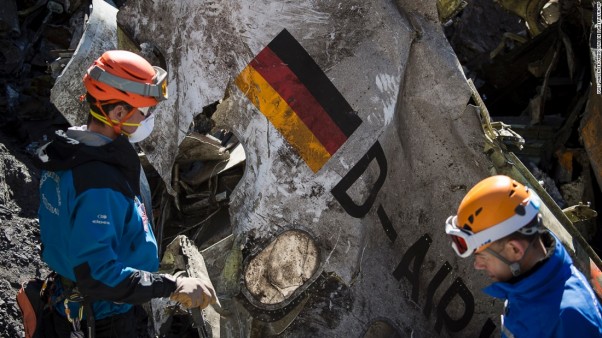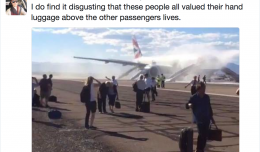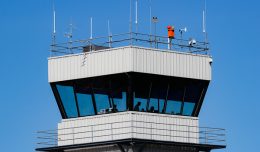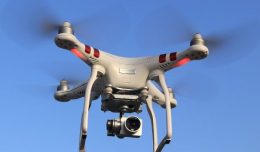In response to the mental illness of the Germanwings’ pilot, who purposely crashed an aircraft into the French Alps, the Federal Aviation Administration (FAA) announced that it would study the mental and emotional health of U.S. pilots. A panel of industry experts, known as the Commercial Aviation Safety Team, and the Pilot Fitness Aviation Rulemaking Committee, have been given six months to come up with new recommendations. There have always been (and will always be) opportunities to prevent a tragedy. With clear hindsight, it is too often determined that common sense was removed from the equation and rules put in its place.
The FAA already has mental health standards and rules for pilots, including having restrictions on pilots who have psychological issues. However, the FAA will continue to be bound by rules that will never be in sync with the person who can prevent a catastrophe like this. The health care industry rules (doctor/patient privilege) result in a contrary philosophy that the FAA can’t change. The reality of the Germanwings crash is that there is a doctor (or two) out there who knew that this particular pilot was a safety issue, but the rules said the doctor couldn’t tell anyone. The FAA will not be able to change doctor/patient privacy laws because pilots are also people.

In addition to proving operational knowledge, pilots must also recertify mental and physical wellness before going through a simulator re-check.
Airline Transport Pilots (ATPs) are already constantly tested on their mental and emotional health and they have to prove it every time they step into a cockpit, simulator, ground school, or flight physician’s office. The dynamics of determining mental health versus being able to do something about it boils down to something completely unrelated to aviation. It’s about privacy, and somewhere among the gravestones, we have to find our common sense. Most importantly, the aviation industry has to make it clear that the Germanwings crash was an anomaly. Even though there have been other pilot suicides, this crash had unique circumstances that the media keeps overlooking.
What is unique about the Germanwings crash is that this particular pilot had only 630 hours total time, and only 100 hours in this type of aircraft. Most of his flight time was under training conditions, not in a crew environment, and this exact scenario of having a low time pilot at the controls of a commercial airliner couldn’t happen now in the U.S. What low hours means is that he had not been filtered out yet. In addition, he had not spent most of his flight hours working in a flight crew environment where deep and complex relationships form. After being locked in the cockpit with other pilots for thousands of hours, another crew member might have noticed his slide into suicidal depression.
Since 2013, U.S. pilots must have a minimum of 1500 hours to sit in the right seat of a commercial airliner (the majority have much more than that). In order for most U.S. pilots to reach the milestone of 1500 hours, they have had to fly in a variety of aircraft and employment situations. While hours have nothing necessarily to do with talent, they an important element in determining whether or not someone can cut it in the stressful aviation world. The result of having to earn these hours before commanding an airliner is that, for one reason or another, the weak will have been weeded out. Those that survive have been mentally, physically, and financially challenged and while there is always an exception to the rule, a deep-seated mental illness would have prevented most pilots from reaching the seat of an airliner in the first place. For pilots that develop a mental illness later in life, the most likely person to spot it will be a partner, spouse, or another crewmember. It won’t be a doctor.
We expect pilots to be mentally and physically fit, but every one of us will have an event in our lives that triggers a temporarily mental health concern. A death, divorce, job loss, financial woes, health issues, etc. are a part of life and can require even the mentally strongest pilot to ask for some time off. A mental health concern becomes a mental illness when ongoing/long-term symptoms affect your ability to function. Most people know the difference. Most pilots know the difference and if they don’t, their crewmembers or partners will. It won’t be a doctor that sees a pilot an hour every six months that will discover their mental illness. It will be crewmembers, friends and family that see that there is an issue. So instead of focusing on making new industry rules about doctors and pilots, these panel of experts need to find a realistic method for the real people of the world to report a potential problem.
Pilots are all a little crazy — they have to be — but with a little common sense, using the rules already in place, and an anonymous professional method of reporting, we can keep the skies safe for everyone.
Erika Armstrong has been in aviation for 25 years. From the front desk of an FBO to the captain’s seat of a commercial airliner, she’s flown everything in between. If you have questions or comments, she can be reached at [email protected]







